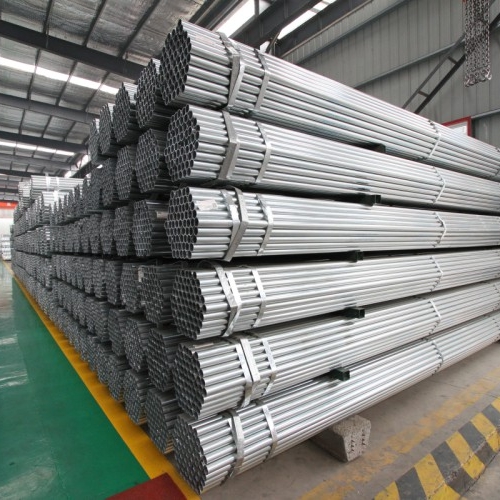Galvanized steel pipe process and application
From: Panhua Metal DATE: 2024/1/30 Hits: 2491
Galvanized steel pipe process and application
Galvanized Pipe is a metal pipe whose surface is covered with a layer of zinc. It has good anti-corrosion properties and durability and is widely used in construction, municipal administration, industry and other fields. The following will introduce the manufacturing process, types, application fields, advantages and disadvantages of galvanized pipes.
1. ...
Galvanized Pipe is a metal pipe whose surface is covered with a layer of zinc. It has good anti-corrosion properties and durability and is widely used in construction, municipal administration, industry and other fields. The following will introduce the manufacturing process, types, application fields, advantages and disadvantages of galvanized pipes.
1. Manufacturing process of galvanized pipe
The manufacturing process of galvanized pipes mainly includes the following steps:
①. Steel cutting: Cut the steel into the required length.
②. Steel Pipe rust removal: Sandblast the surface of the steel pipe to remove rust and oxide scale on the surface.
③. Galvanizing treatment: Put the rust-removed steel pipe into a galvanizing tank, and after electrolytic deposition, a dense zinc layer is formed on the surface of the steel pipe.
④. Inspection and storage: After galvanizing is completed, the steel pipes are inspected for quality and qualified steel pipes are stored in storage.

2. Types of galvanized pipes
Galvanized pipes are mainly divided into the following types:
①. Hot-dip galvanized pipe: Hot-dip galvanized pipe is a steel pipe that is heated at high temperature and then immersed in a galvanizing solution to form a thick zinc layer, which has high anti-corrosion performance and durability.
②. Electro-galvanized pipe: Electro-galvanized pipe uses steel pipe as the cathode and deposits a thin zinc layer on the surface through electrolysis, which has good anti-corrosion performance and decorative properties.
③. Zinc-infiltrated pipe: Zinc-infiltrated pipe is a new type of anti-corrosion material. It penetrates zinc atoms into the surface of the steel pipe to form a dense zinc layer, which has high anti-corrosion performance and durability.

3. Application areas of galvanized pipes
Galvanized pipes are widely used in the following fields:
①. Construction field: Galvanized pipes are widely used in water supply, drainage, heating and other piping systems in the construction field.
②. Municipal field: Galvanized pipes are widely used in sewage, rainwater, tap water and other pipeline systems in the municipal field.
③. Industrial field: Galvanized pipes are widely used in fluid transportation pipelines in petroleum, chemical industry, electric power and other industries in the industrial field.
4. Advantages and Disadvantages of Galvanized Pipes
①. Advantages: Galvanized pipe has excellent anti-corrosion performance and durability, which can extend the service life of the pipe; the surface is smooth, not easy to accumulate scale, and easy to clean and maintain; it has good compressive strength and tensile strength, and is suitable for various applications. pressure and temperature conditions.
②. Disadvantages: The cost of galvanized pipes is relatively high, and a large amount of energy and resources are consumed during the manufacturing process; they are easily scratched and deformed during transportation and installation, and corresponding protective measures need to be taken; for some special environmental conditions, Such as high temperature, high humidity, etc., the anti-corrosion effect of galvanized pipes may be affected.
In summary, galvanized pipe, as an excellent metal pipe material, has broad application prospects. In actual use, the appropriate type and specification of galvanized pipe should be selected according to the specific situation, and installed and maintained in strict accordance with relevant standards and specifications to ensure the safe and stable operation of the pipeline.





